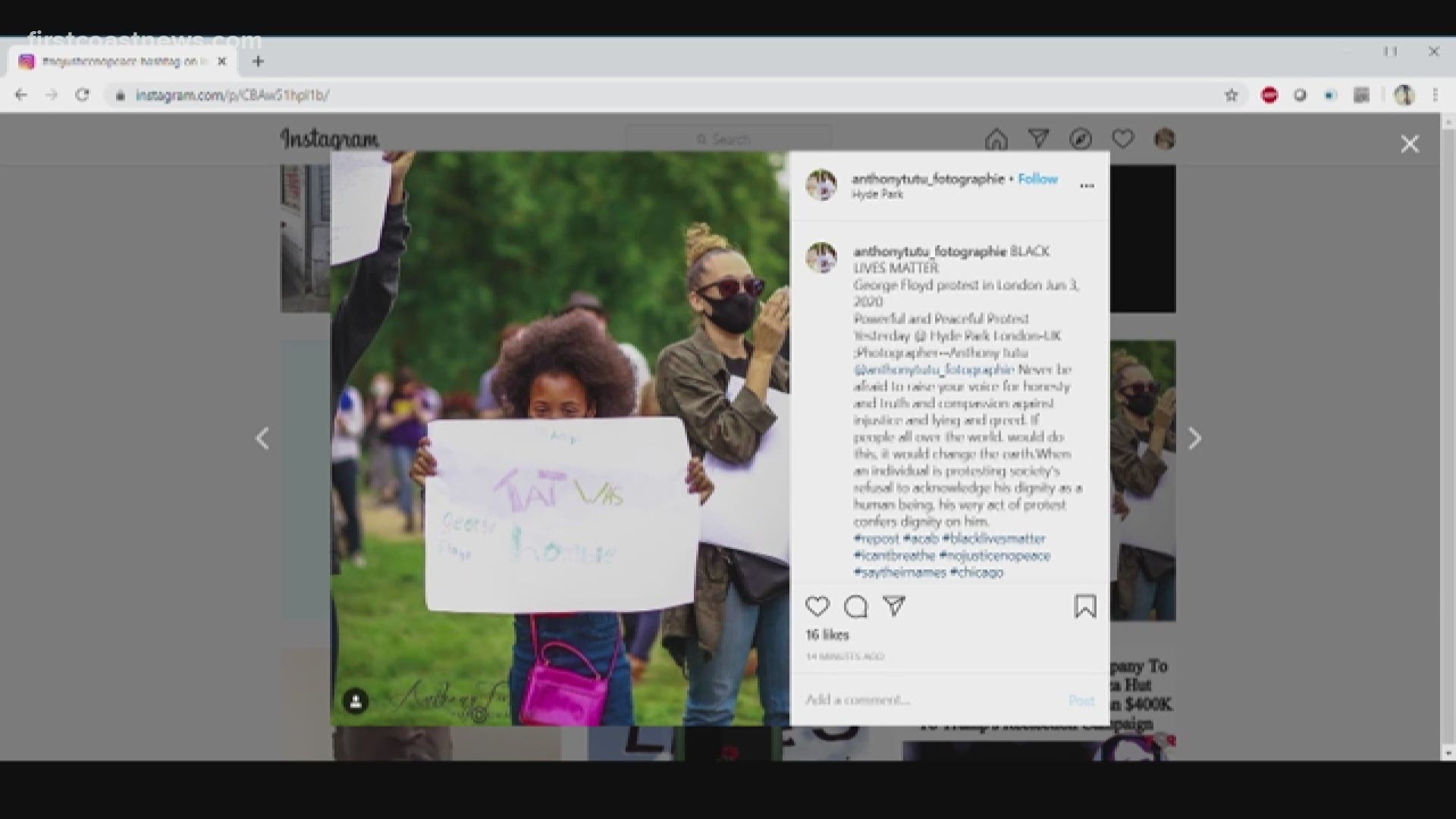As protests across the First Coast and around the world continue, children are getting involved in the movement for justice.
On social media, countless images can be seen of youth demonstrations. A post making its rounds online is of a young girl marching while chanting the words 'no justice no peace.’
Psychologist Tracy Alloway explains the autonomy associated with demonstrating can have a positive effect on a child.
“One of the things we do know is that our brains mirror certain emotions and it’s very likely that her family, her parents are very passionate about creating awareness,” Alloway said. “This young girl is learning. She’s mirroring that same kind of passion. And being able to use her voice to do that as well. I think it’s really positive that we are encouraging our younger generation to be able to express themselves in this way, to be able to express their own passions and their own causes.”
For children not involved in the cause and interested in understanding why people are gathering in such large crowds, Alloway suggests parents use a method of questioning that includes ‘what, why and how.’
“What do you think is going on,” Alloway stated. “Instead of giving the child the script. Let them articulate what they think is happening. The second thing I would say is why do you think this is happening? That why question is crucial in giving the child space to talk about what they’re thinking and feeling. The third question I would ask is how would you respond in this situation?”
She explains that by asking your child how they would respond, that gives them a sense of control at a time when they feel as if things are out of their control.
As for your kids possibly being fearful about the demonstrations and the movement behind them, Alloway says fear is mainly a learned emotion.
Parents need to be mindful of the words they’re using around the house when describing the protests underway.

